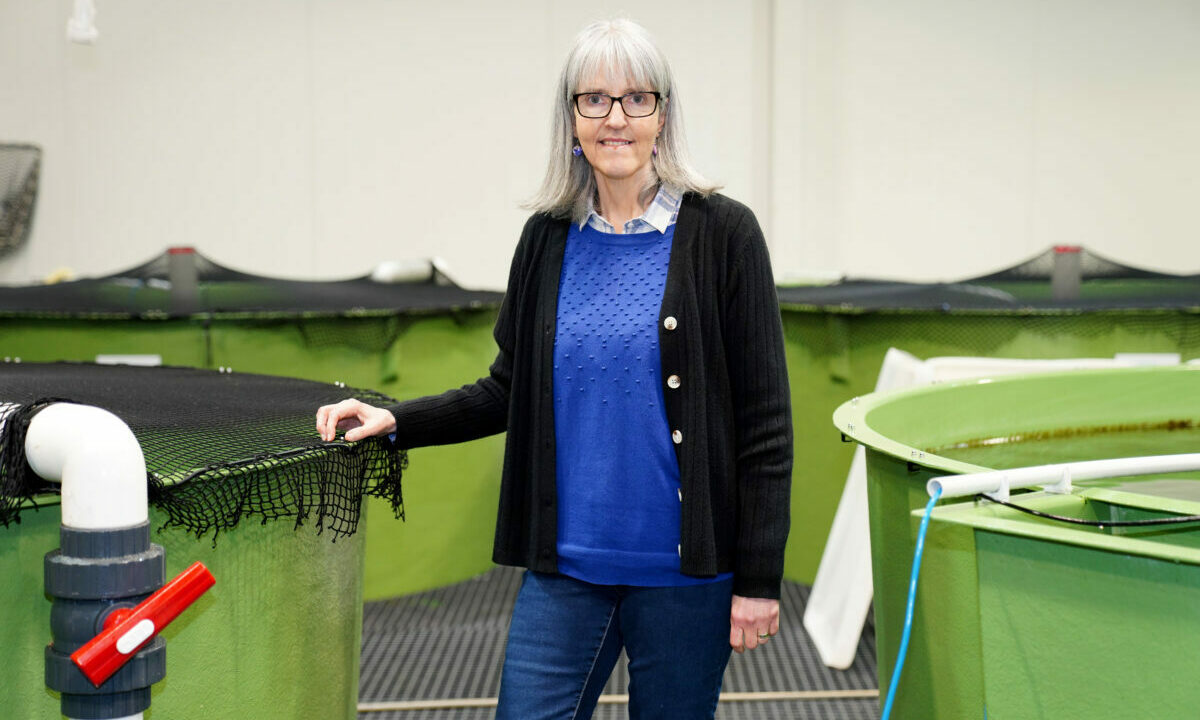Animal Welfare
Cawthron Openness Agreement Statement

About the Agreement
Launched on 27th July 2021 at the ANZCCART (Australia and New Zealand Council for the Care of Animals in Research and Teaching) conference, the agreement becomes the first of its kind outside Europe.
This agreement highlights the value and importance of engaging with Tangata Whenua and being transparent when animals are involved in research – so that everyone can understand how and why research is being carried out, the importance of work being done and be reassured the methodologies used ensure the animals’ best welfare.

Working with animals at Cawthron
At Cawthron we have high ethical standards and all our applications to work with animals go through a stringent process with an animal welfare committee before being approved. While a few our research programmes utilize animals, they all adhere to the principles of the 3Rs (replacement, reduction, refinement) in research.
Our research and development directly support the growth of primary industries and protection of the marine and freshwater environments. The privilege of using animals is a key feature in our research programmes.
For more information about animal welfare at Cawthron please email info@cawthron.org.nz

FAQs
Why are animals used in research?
The use of animals in research helps us understand vital information about human and animal health and welfare and the health of the environment. Animal-based research has also been instrumental in understanding the fundamental ways in which normal bodies work.
With this knowledge scientists have been able to improve quality of life and save lives by developing new treatments for many animal and human diseases and conditions. New Zealand law requires that animals are only used when alternatives such as cell cultures or computer modelling are not available.
What type of research does Cawthron do that involves animals?
Cawthron does a variety of kinds of research involving animals. Some of this research includes monitoring animals in the wild and other forms involve keeping them in a laboratory environment to run research trials. Likewise some of our methodologies are invasive, and others are non-invasive. We always aim to select the most ethical approach we can when designing research that involves animals.
When is Animal Ethics Committee approval required?
Approval is required for any manipulation of any animal for the purpose of research, testing and teaching *, for euthanising an animal to conduct research or teaching on a dead animal or animal tissue, and when using animals in fieldwork beyond simple observation.
*Definitions for ‘Manipulation’, ‘Animal’, ‘Research, testing and teaching’ are as set out in the ‘Interpretation’ section of the Animal Welfare Act 1999.
How is animal research regulated at Cawthron Institute?
Applications for work using animals are assessed by Te Pukenga NMIT Animal Ethics Committee (AEC). This often takes several weeks as applications are highly scrutinised.
Strict legislation and ethical protocols guide animal research including the requirement for researchers to provide rigorous justification for the need to conduct animal research. Researchers must demonstrate that there is no possibility of using alternatives, they must use the fewest number of animals needed and harm to animals is the minimum possible while positive welfare is maximised.
Under New Zealand’s Animal Welfare Act, all animal research or teaching activities must have AEC approval. Te Pukenga NMIT AEC must pass mandated audits and the Director-General of the Ministry for Primary Industries must approve NMIT’s Code of Ethical Conduct.
What types of animals are used in research at Cawthron?
Fish, cetacean, crustaceans and eels are the main animals involved in research at Cawthron. The research we conduct involving eels and cetaceans mostly involves monitoring these animals and their environments and is minimally invasive, whereas our research involving fish and crustaceans can involve laboratory-based experiments and trials.
Do animals benefit from research?
Research carried out using animals has been instrumental in the development of many medicines and procedures which improve the health and welfare of animals. Research on wildlife provides direct and indirect benefits for specific species and their habitats.
What is the cost to the animals?
The Animal Ethics Committee is required by law to ensure that the pain and distress of animals is the minimum possible and that the benefits derived from the use of animals are not outweighed by the likely harm to the animals.
How are the animals cared for?
Basic needs (food, water, and housing), stable temperature and humidity range, appropriate social groups, and appropriate enrichment are provided for animals. This allows them to express more natural behaviours and decreases the potential for detrimental mental or physical health effects that may result from the laboratory environment.
Specialised animal care technicians look after the animals daily. The scientists who work with these animals are also closely engaged in their care. Researchers depend on robust and healthy animals to produce reliable results, so it is in everyone’s best interest to provide the best care and environment possible. Everyone who works with laboratory animals has a responsibility to care for their well-being.
New Zealand law dictates that the physical, health, and behavioural needs of animals must be in accord with good practice and scientific knowledge.
What happens at the end of the study?
At the end of many scientific studies animals are euthanised following robust international guidelines. Procedures are carried out under strict supervision by trained researchers and animal technicians. Some wild animals are released when possible.



